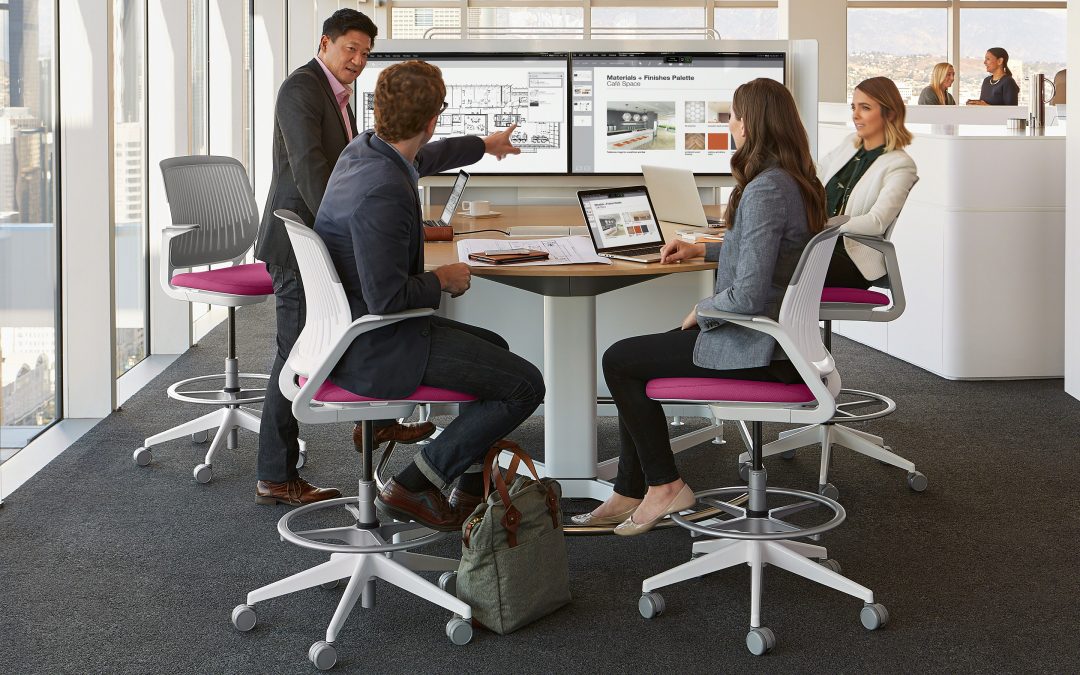A growing trend in workplace design gets its name from the sports world—the huddle room. Like a team of players quickly gathered to plan the next play, the huddle room is designed for spontaneous collaboration—away from the distractions of a noisy office environment.
What’s a Huddle Room?
A huddle room is simply:
• A small, insulated meeting space for 2 to 6 people.
• Requires no advance scheduling (unlike big conference rooms). Groups can meet on-the-fly throughout the day.
• Can be used for multiple purposes: brainstorming, presentations, job interviews, or client visits.
• Includes audio/video conferencing for presentations and to communicate with people outside of the room.
Designed for Collaboration
Corporations, educational institutions, and hospitals alike have all embraced the concept of having multiple, smaller, ad-hoc meeting rooms versus one large conference room. Huddle rooms have taken off in recent years partly in response to the lack of privacy inherent in open office plans and partly from the growing number of millennials in the workplace who prefer a more collaborative, team-oriented environment.
Globally, the total number of huddle rooms in use today is estimated to be between 30 and 50 million.1 In a changing workplace, huddle rooms offer several advantages for today’s companies:
• A more budget-friendly use of office space and resources.
• A flexible approach that fosters impromptu discussions and meetings.
• A way to include remote workers.
• A more intimate space for small groups.
Key Components of a Huddle Room
To be most effective for the informal exchange of ideas, a huddle room should include the following elements:
• Space for 2 to 6 (approximately 10 x 10).
• A small central table with enough comfortable chairs.
• An interactive (or regular) whiteboard.
• A wireless display to easily share content from a mobile device.
Wireless display brings a new level of productivity into the huddle room, making it possible for people to walk in, at the spur of the moment, with a mobile device and easily project content onto a small screen. As the huddle room trend continues to grow—and we expect that it will—wireless display appears to be the natural evolution to help people work together more effectively.
Want to learn more about wireless display? Download your own copy of Wireless Display For Dummies here.
1 Wainhouse Research, Understanding the Huddle Room: Maximizing the Value of Small Meeting Room Spaces, 2015
